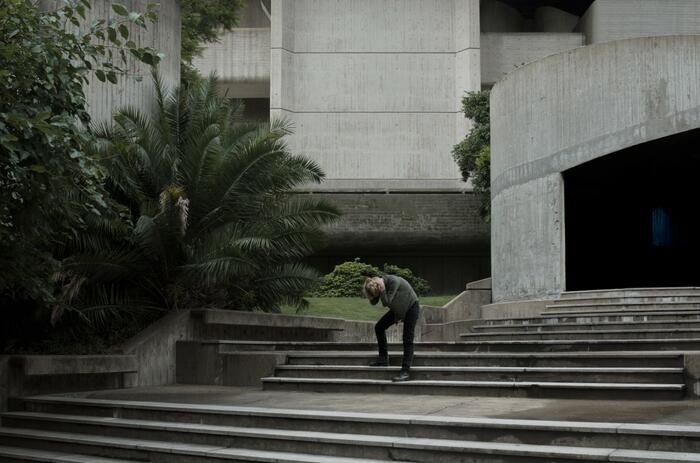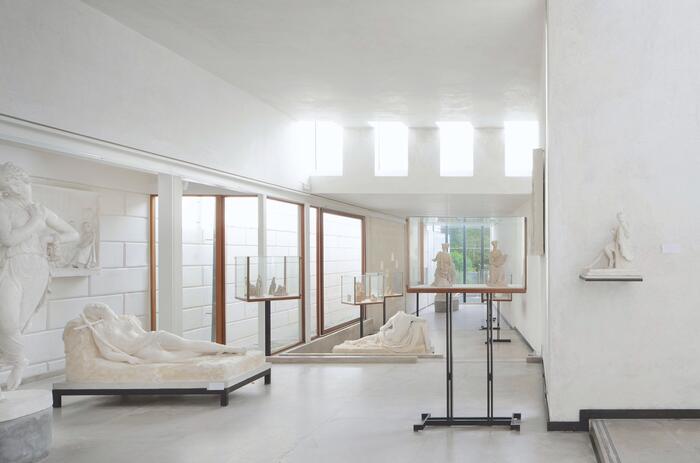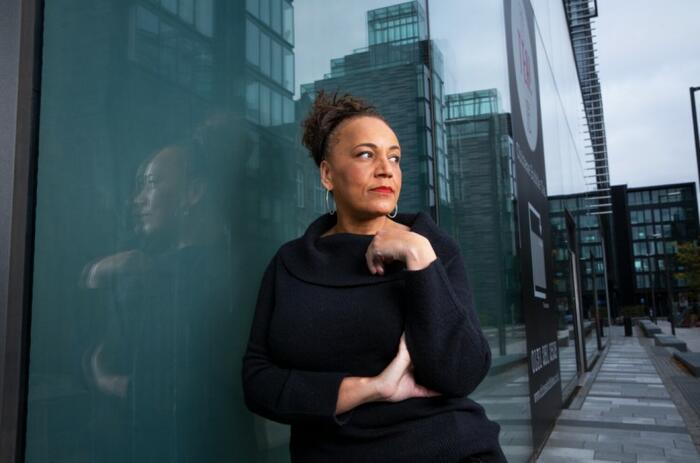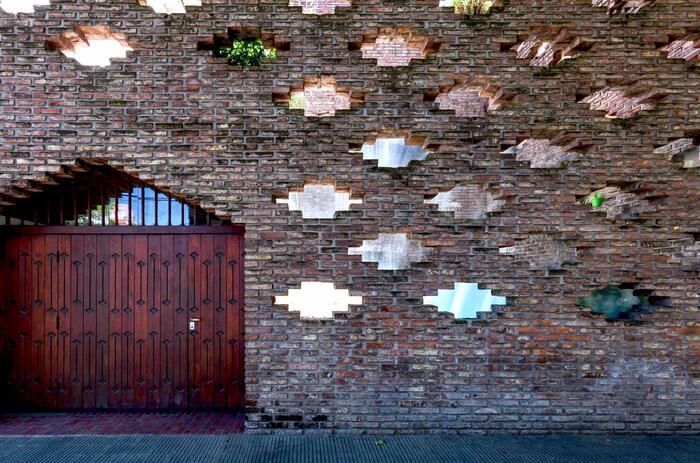COLUMNS AS TEXTS: READING ARCHITECTURE
In 1985, Josefina Ludmer gave a set of classes in the form of a seminar at the University of Buenos Aires. These classes marked a turning point in the way we read literary theory. In dialogue with the book Ways of Seeing by John Berger, Ludmer will raise the question about ways of reading literature. Ricardo Piglia dictates in 1990 a seminar composed of 11 classes that will later be known as the seminar of "The three vanguards"; This will become a point of reference to account - among other problems - for how certain authors build their own tradition by confronting it with others.
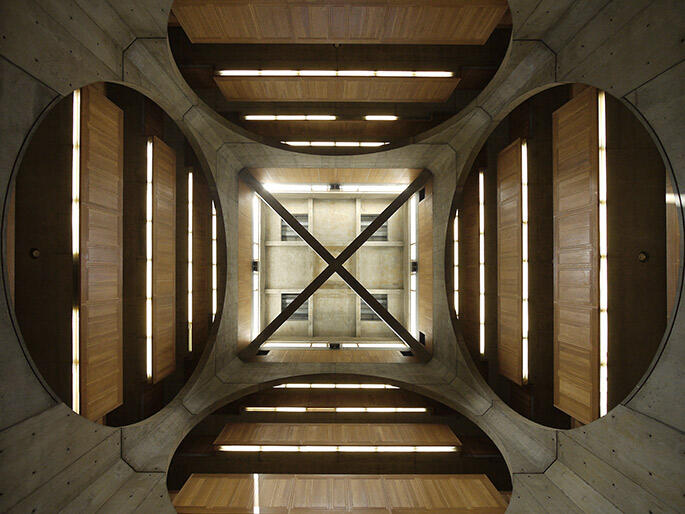
Both authors will guide us in the elucidation of certain relationships and issues within architecture understood as text, as a language or as a way of being read.
Far from being clear and precise, the relationships that link reading and architecture are rather opaque. Their connection is enigmatic. Disassembling these relationships, discovering how they operate, and revealing their transmission belts is a reading task, or rather a way of exercising it. What does one read when reading a play? Who or what do we read and where do we read from?
-
Ricardo Piglia. Foto: Casa de América
Inquiring from where an architect builds their work (not only his material work but also conceptual, theoretical) is to pose a problem less abstract or indeterminate than concrete. It is historical, insofar as it is inscribed in a certain period and is not alien to its time (it cannot be) and it is topographical insofar as it can be traced in its limits, in its form or its scope.
Each author - whether aware or not - chooses and sets up their shelf, that is, their referential set from which to build their work or issue their speech. Just as Borges wants to be read from one tradition and not another, each architect builds, hierarchizes, values, decides and judges: it is this work and not this other, such a reference and not such another, this way of intervening in a territory and not that. It is unimaginable (to paraphrase Piglia) a history of architecture that does not involve a restructuring of hierarchies and supplants one set of references by another. The resulting corpus is a way of reading architecture that legitimizes (or does not) certain practices, authors, and forms of action over others. These ways of reading are not eternal, but are historical and all work on criticism (of and from architecture) implies a genealogy of them.
It is neither more nor less than a problem of legitimacy. The meaning of a work does not only depend on who produces it, but also on who receives it: on its reader. Somehow, it is not so much the work itself that determines its meaning or its function, but the way we read it that will determine its interpretation. The reading modes act as machines that operate by moving and circulating the possible sense(s). Far from looking for the correct interpretation, we start in search of the one that would be more pertinent or appropriate as the case may be. So: what is read and where is it read from. Writing for example from Piglia implies updating a whole tradition that goes from Ludmer’s classes to John Berger and Walter Benjamin.
If Borges seeks to be read from Stevenson or Chesterton, and Manuel Puig from the cinematographic tradition, we could say that an architect like Louis Kahn seeks to a certain extent to be read from the Western tradition of masonry construction (one of his most famous quotes: “wrapping ruins around buildings”).
Wherever there are brick beams, Kahn reads arches, orders and pilasters, and from there he replenishes or updates an entire constructive tradition of Roman architecture. Chesterton is to Borges what Flavian's amphitheater is to Kahn's Exeter library.
Another architect like Frank Lloyd Wright will read architecture from the American desert plain with its projections and horizontal planes and from there he will shape a conception of space that can be traced back to being found in the plasticity of traditional Japanese architecture. We could say that Wright wants to be read not only from the American territory but also from a whole constructive tradition from the East. Wright reads the imperial villa of Katsura in his waterfall house.
However, not every work lends itself to multiple readings: a space that refuses to be deciphered or understood in a direct way keeps an enigma for itself: the continuous possibility of being narrated or interpreted. These readings are desired or reiterated.
Paul Valéry calls such a state a poetic universe. On the contrary, a determined, conclusive space, turned on itself, does not narrate, but rather informs: hence the boredom that arises in the face of a certain diaphanous spatiality, devoid of language, whose reading is quickly exhausted.
As we can see, there is no such thing as a neutral reading position. Far from being a separate or scientific activity, all reading (whether of architecture or from it) is exercised from and to a specific place and is confronted with other possible readings by the power of giving a meaning or an interpretation; that and no other. Thus, the readings - their modes - are constituted in dispute with other modes of reading that do not seek anything other than to dissolve. All reading is agonizing insofar as it lives in constant tension with others who seek to cancel it. Understood in this way, the meaning - of a work of architecture or of a literary text - is not something given, but rather it is these confrontations that define, re-define, alternate and shape possible interpretations over time. Far from being innocent, the search for legitimation of one or another reading is nothing but the dispute to legitimize one or another interpretive sense: what can be read and what cannot; from what architectural traditions do we think and which are we denying.
It would then be less about understanding a work (which would imply entering a regime of legality or truths, a reduction to correct categories: this means that) than to account for a multiplicity of meanings according to their proliferation and plurality: as a text, architecture produces and evokes multiple meanings as multiple are the ways of being read.
*Cover: Phillips Exeter Academy Library, Louis I. Kahn. Photo by Aurora Fernández Per and Javier Mozas

